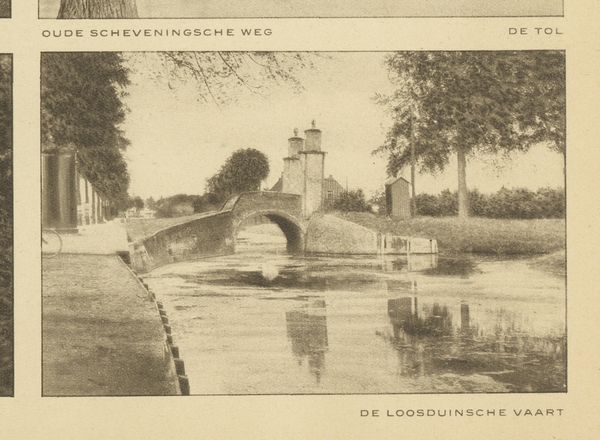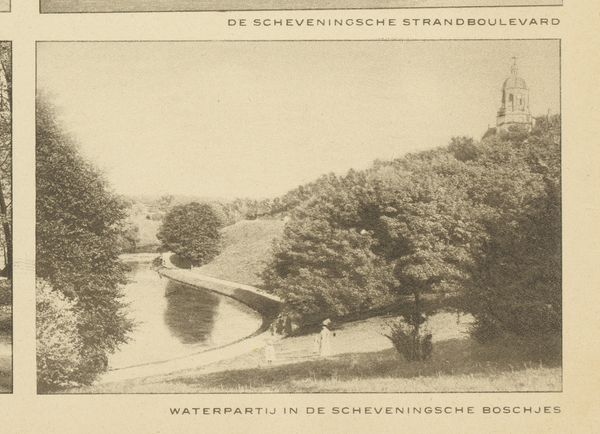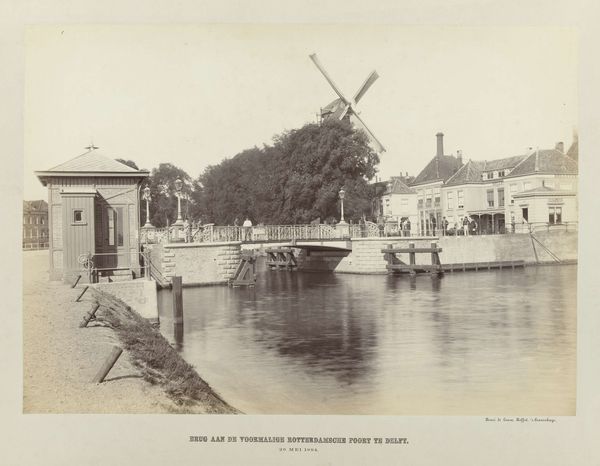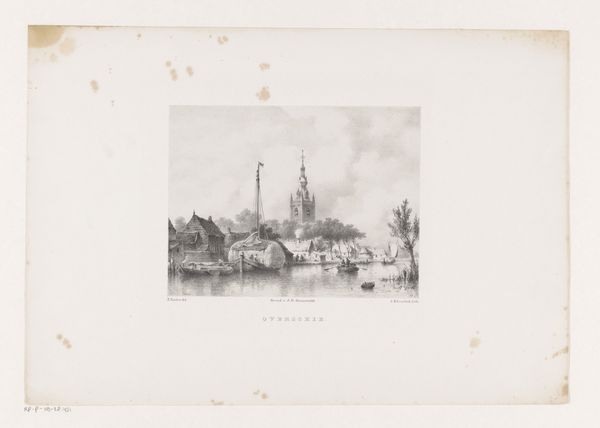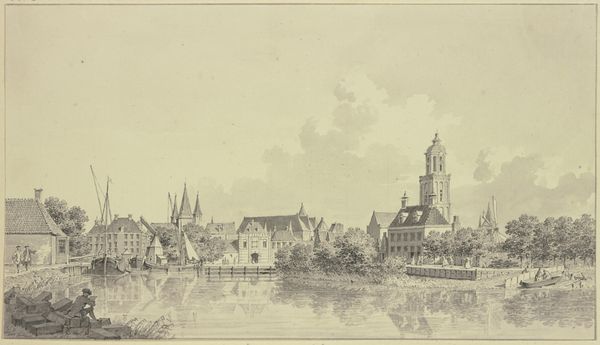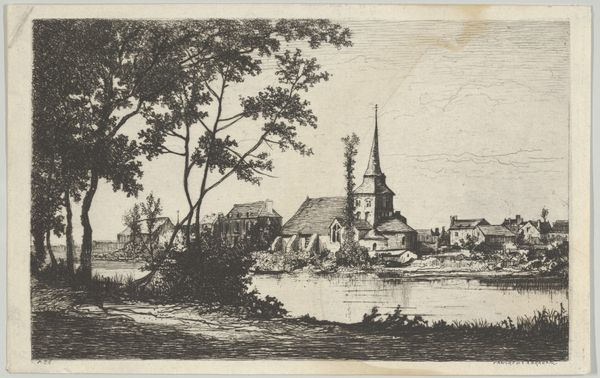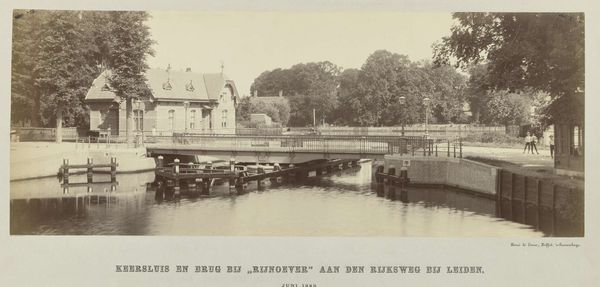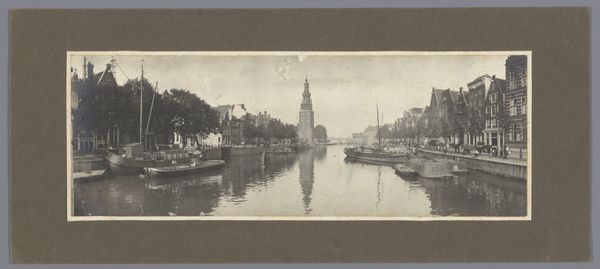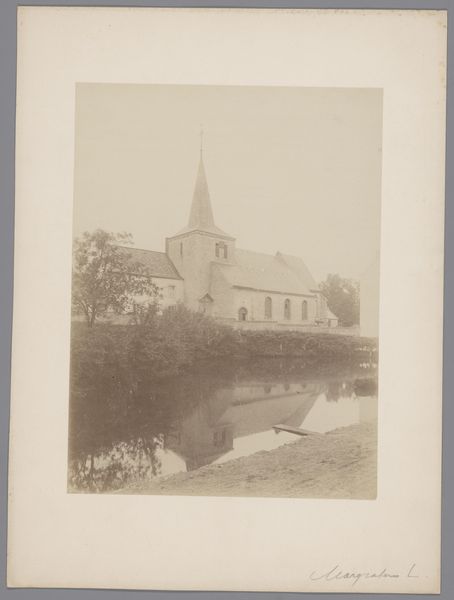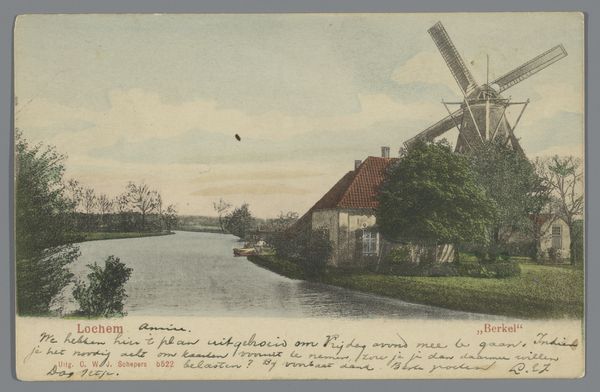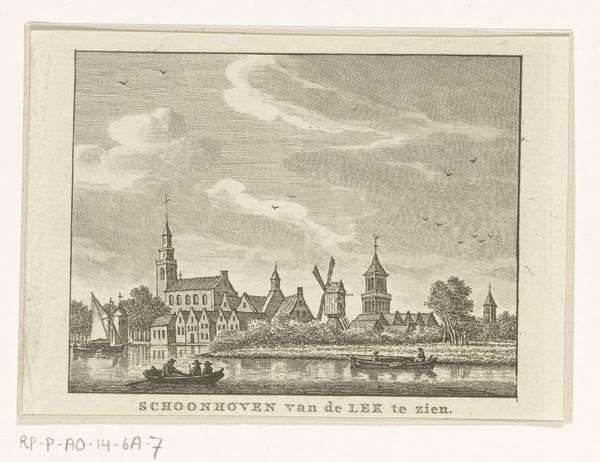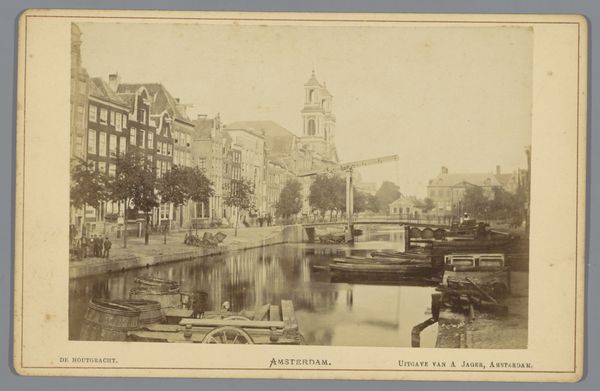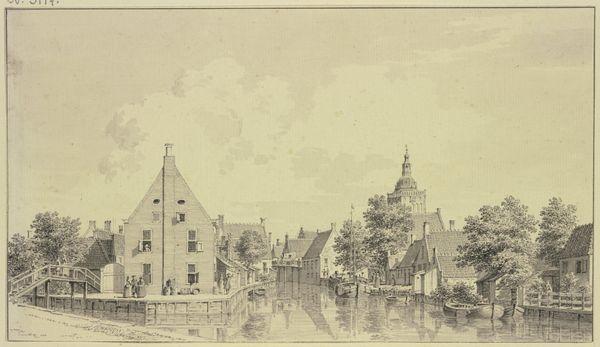
print, photography, gelatin-silver-print
#
pictorialism
# print
#
landscape
#
photography
#
historical photography
#
gelatin-silver-print
Dimensions: height 60 mm, width 117 mm
Copyright: Rijks Museum: Open Domain
Curator: "Gezicht op Tholen," or "View of Tholen," captured before 1915 using the gelatin silver print technique. Its hazy and soft tones evoke a sense of stillness. Editor: My first impression is one of tranquility. There's a dreamlike quality to it, a placid melancholia conveyed by the muted greyscale. One wonders what life was like for the inhabitants of the Zeeland region in that era. Curator: Indeed, the gelatin silver process renders a unique softness and pictorial depth to the composition, aligning with the pictorialist movement’s aspiration for photography to emulate painting. Consider the structure; the placement of the water creates a strong horizontal element, grounding the scene, and offering a foil to the vertical lines of the church spire and windmill. Editor: And yet, it feels deeply rooted in its specific locale and a collective experience. Landscape, especially one as palpably pre-industrial as this, acts as a repository for cultural memory. The inclusion of the windmill and church situate this in a rural, tightly knit, and deeply religious community—a Dutch archetype perhaps. What role did photography like this play in constructing that identity? Curator: It certainly monumentalizes the everyday. The use of soft focus almost elevates it, removing it from the harsh realities of existence and lending an ethereal grace, drawing attention to the arrangement of shapes and forms within the frame, turning documentary into aesthetic object. Editor: I disagree. By blurring the specific details of its time and the labor involved, it can inadvertently perpetuate an idealized version of that place, erasing marginalized figures. Who owned the means to capture these landscapes? Who might be missing from the picture, both literally and figuratively? Consider the working class, the impact of colonial activities during this period, which funded technological advancement within Western Europe... Curator: A photograph like this could serve both. Its aesthetic construction allowed viewers to appreciate its visual qualities as form. Editor: Absolutely, and by recognizing the historical contingencies, perhaps we also reveal a glimpse of who was being left out of those forms of representation at the time. Thank you, that gives me more to think about. Curator: My pleasure; the piece encourages a deeper appreciation for form.
Comments
No comments
Be the first to comment and join the conversation on the ultimate creative platform.
